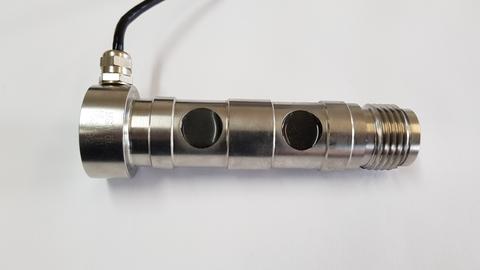4 Tips for the Measurement of Load with a Load Pin
Jul 16, 2021 19:15
From mining to manufacturing, construction to transportation, and agriculture to aerospace, the need to weigh/measure load has grown rapidly to improve production safety and control costs.
Previously, the ability to detect weight or force was lacking, and industries used complex systems such as construction cranes, heavy lifting equipment, grain silos, etc. But now, the technology has been upgraded including load cells, load pins, and other weighing devices, are becoming more and more popular.
These sophisticated weight and force sensing devices can help maximize the efficiency of the production load while providing some of the enhanced safety features that are increasingly required by regulations, such as automatic shutdown if a load exceeds capacity.
Here in the article, we have provided our readers with a quick overview of measuring weight with a load pin so that you know all about how it works and its benefits.
What is a Load Pin?

A Load pin is a variation of load cells typically used as a yoke, replacing axle shafts and pins in machines. It helps users determine the level of force applied to them, i.e., to measure the weight of the load. Load pins are frequently used for system safety control, overload protection, and preferred wherever space restrictions and ease of integration are important.
The external area of the load pin is categorized by two channels, which define the shear planes. To provide the required load, the pins yield a signal corresponding to the force experienced by the load pin.
Benefits of using Load Pin
Here are some advantages that you can have by using the charging pins; they are the following:
1. Simplest system
Whether it's humid or hot, a load pin can work in all environmental conditions. They are also considered to be one of the simplest and most reliable systems for measuring loads.
2. Waterproof
As mentioned above, you can use the pins in extreme conditions also as they are covered with a central bore. Therefore, making them waterproof and allowing them also to work underwater.
3. Available in various sizes
Load pins can be supplied in different sizes and weight capacities. It means you can find the right pin for your system/application.
Common Applications of Load Pin
Load pins are widely used in various industries, including chemical manufacturing, steel mills, seaports, aerospace, mining, chemical plants, elevators and ground conveyors, agriculture, logistics, etc.
However, the load pins are small in size but incredibly robust and suitable for intensive use in harsh industrial environments and can be used in different applications.
Tips for measuring weight with a Load Pin

1. Choose the right size.
Each load pin has a different size and design for a specific environment, mechanical orientation, and set of conditions. You can also order online for custom design load pins as per your for your exact applications. Therefore, configuring the proper attachment and mounting is essential to maximize load pin performance and maintain safe operating conditions.
The pruning must be strong enough to support the maximum weight allowed by the measuring device (including overload).
2. Appropriate Lubrication
All sliding surfaces of mechanical parts must be lubricated. In particular, you must grease the load pin before using it. However, if the load pin is used with compensating pulleys, periodic lubrication is sufficient.
When the operating conditions are very humid, high temperature, dust, etc., it is recommended to lubricate the bearings at short intervals.
3. Avoid the Pitfalls
There are several issues with load pins and what to do to resolve the issues;
● Broken transmission line
● No-load / Overload
● Reversal of applied load
● Transmission line shorted
● Fault in the integrated electronics
Furthermore, the most common problems encountered when operating load pins are the detachment of strain gauges or plastic deformation due to overloading, as well as a torn cable during improper handling.
So, it is best to check the line and connections/wiring correctly first. And if there is some other problem when measuring the weight with the load pin, you can contact the repair company. In addition, the frequency of checks depends on the application or the maintenance program planned for the installation.
4. Good decoupling is vital.
If the retaining plates are in contact with the central tool, they will cause friction, generating greater uncertainty and problems of non-repeatability. In addition, there may be a signal problem in extreme cases as the friction will not allow the release forces to be applied to the load pin.
So, if you want precise results while measuring weight with load pin, it is mandatory to have air gaps of a minimum of 0.5 to 1 mm between the flanges and the central tool.
Closing Words
The best weight measuring solution is incomplete without Load pins ensure. It not only provides correct results but are also easy to carry anywhere. But keep in mind that each system is unique and often has specific considerations to ensure the best results. However, there are many factors to consider when installing, evaluating, and using load pins.







































































